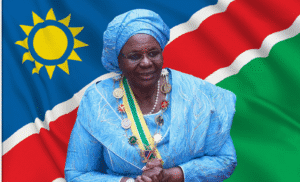The Washington Eye
The Colorado River system, the lifeblood of the American Southwest, is in a state of advanced collapse. This is not a distant forecast or a climate model’s warning; it is a mathematical and hydrological reality. As of mid-2025, Lake Mead and Lake Powell—the two largest reservoirs in the United States and the system’s primary storage tanks—remain at catastrophically low levels, hovering near just 25-30% of their total capacity.
The stark “bathtub rings” scarring the canyon walls are a graphic measure of the deficit. According to the U.S. Bureau of Reclamation, the system has lost a volume of water equivalent to the entire capacity of Lake Mead since the year 2000. This is the devastating outcome of a 25-year “megadrought”—the driest period in the region in at least 1,200 years—supercharged by climate change and colliding with a century of unsustainable water management.
The crisis now directly threatens 40 million people across seven states and parts of Mexico, jeopardizing the water supplies of Los Angeles, San Diego, Phoenix, and Las Vegas, and imperiling a $1.4 trillion regional economy. The core of the problem lies in the 1922 Colorado River Compact, a legal framework that allocated more water than the river typically carries, creating a structural deficit from its inception. Scientists now understand the river’s flow has declined by nearly 20% since 2000, a process of permanent “aridification” that renders the old math fatally obsolete.
The first and deepest cuts are eviscerating the agricultural sector, which consumes nearly 80% of the river’s water. In regions like California’s Imperial Valley, which supplies the vast majority of America’s winter vegetables, farmers are being paid billions in federal funds to fallow hundreds of thousands of acres of productive farmland. A 2023 agreement saw Arizona, California, and Nevada commit to conserving 3 million acre-feet of water by the end of 2026—a volume equivalent to the annual water usage of 6 million households. This is not a managed transition; it is a desperate, emergency buyout of an industry, with dire implications for the nation’s food supply chain and the stability of rural economies built entirely on irrigation.
This modern crisis is also forcing a reckoning with historical injustices. The Colorado River Basin is home to 30 federally recognized Native American tribes, many of whom hold senior water rights that are legally the most secure on the entire river. However, as detailed in reports from organizations like the Water & Tribes Initiative, many of these rights have never been fully quantified or have gone undelivered by the federal government. As states and cities scramble to secure their shrinking allocations, tribes are now engaged in intense legal and political battles to claim the water they were promised long ago, adding a volatile layer of moral and sovereign conflict to the resource war.
The dream of endless Sun Belt expansion is officially over. In a landmark 2023 decision that sent shockwaves through the region, the Arizona Department of Water Resources announced it could not guarantee a 100-year water supply for new housing developments in the Phoenix area that rely on groundwater. This effectively halted the explosive suburban growth machine, stranding investments and signaling that the era of building new communities in the desert is drawing to a close. For millions already living in these cities, the consequences are materializing as skyrocketing water bills and draconian restrictions on outdoor water use, once an unquestioned part of the Southwestern lifestyle.
Scientific consensus is bleak. Research from the U.S. Geological Survey confirms that rising temperatures are the primary driver of the decline. Warmer air relentlessly draws more moisture from soil and reservoirs, while a dwindling mountain snowpack—the river’s source—melts earlier in the year, allowing more water to evaporate before it ever reaches the river system.
The recent conservation agreements, while historic, are seen by most experts as a tourniquet on a hemorrhaging artery. They are temporary measures designed to prevent the reservoirs from hitting “dead pool”—the point at which water can no longer flow past the dams to generate power or supply cities downstream. The fundamental imbalance remains. The American Southwest is now undergoing a painful, forced recalibration to a hotter, drier reality. There is no rescue coming; there is only the grim management of a shared and catastrophic decline.















